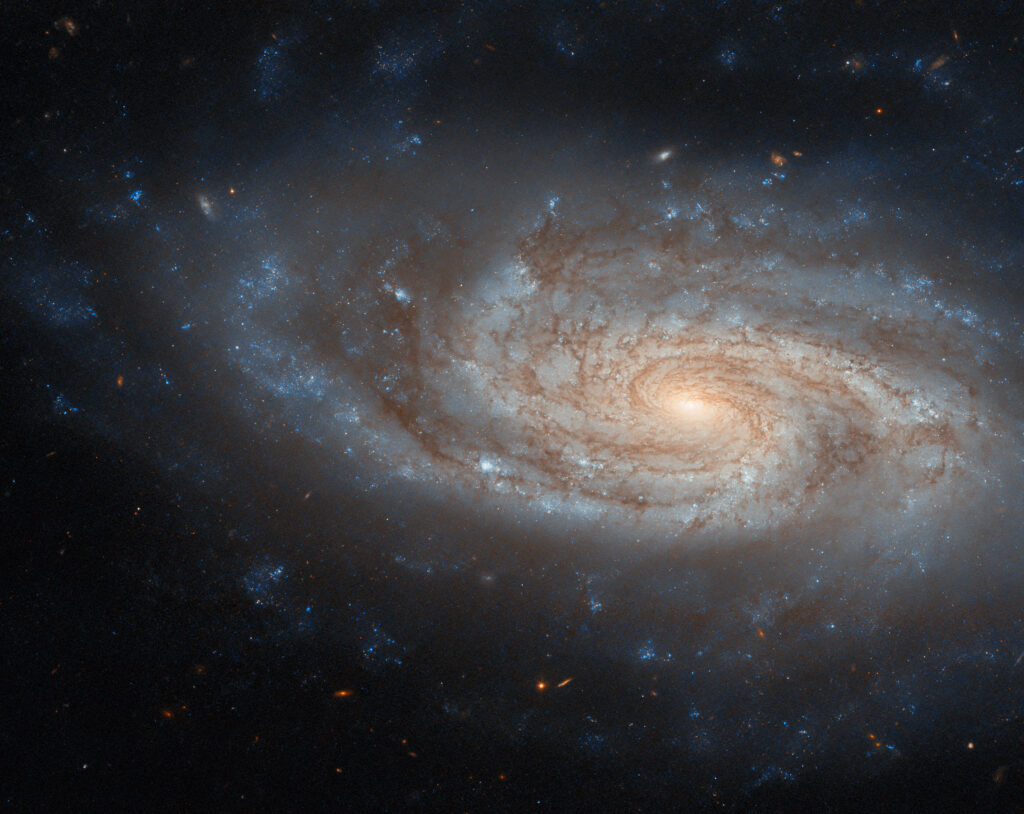The Hubble mission team has published a spectacular new portrait of a deep space object. This time the telescope photographed the galaxy NGC 3430.

NGC 3430 is a spiral galaxy located 100 million light-years away from Earth toward the constellation Leo Minor. It resembles the Milky Way, but unlike our galaxy, it has no bar. This is the name given to an elongated, luminous formation of gas and stars that connects the nucleus to the spiral arms. Astronomers believe it is a crucial “transport artery” redirecting matter to the center of the galaxy. There it becomes building material for new luminaries or is absorbed by a supermassive black hole.
There are several other galaxies near NGC 3430. They didn’t get caught in the frame, but one of them is close enough that its gravitational interaction caused a burst of star formation.
NGC 3430 is such a classic example of a galactic spiral that perhaps for this reason it was included in the sample that Edwin Hubble used to create his classification of galaxies. In 1926, he wrote a paper in which he classified about four hundred galaxies according to their appearance — as spiral, barred spiral, lenticular, elliptical, and irregular. This simple typology has proved extremely influential, and modern, more detailed schemes are still based on it. It classifies NGC 3430 as SAc — a spiral galaxy without a central bar with open, well-defined arms.
At the time of Hubble’s paper, the study of galaxies was still in its infancy. Just a couple years earlier, the astronomer had resolved a long-running dispute over the location of these “nebulae,” as they were then called. Using variable stars Hubble conclusively proved that they were outside the Milky Way. When the scientific community accepted this concept, for some time the rather poetic term “island Universe” was used to describe the structure of the Universe.
According to esahubble.org


